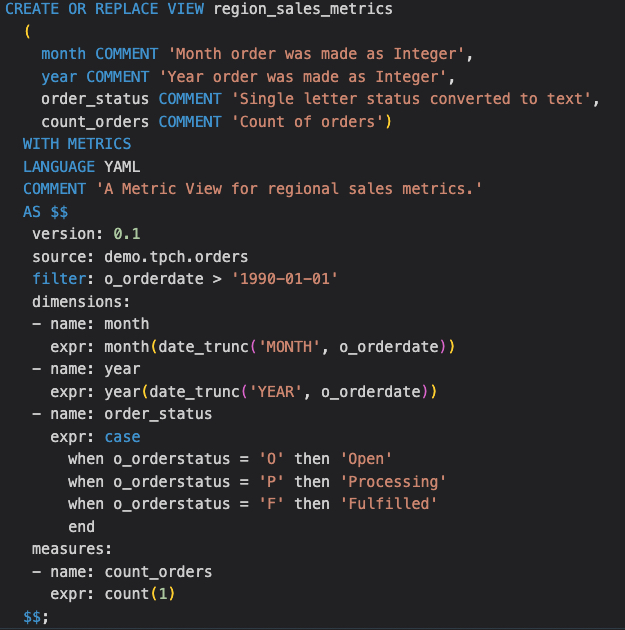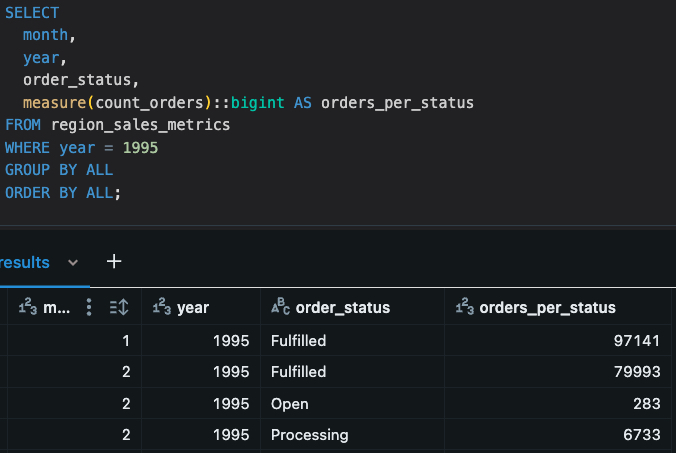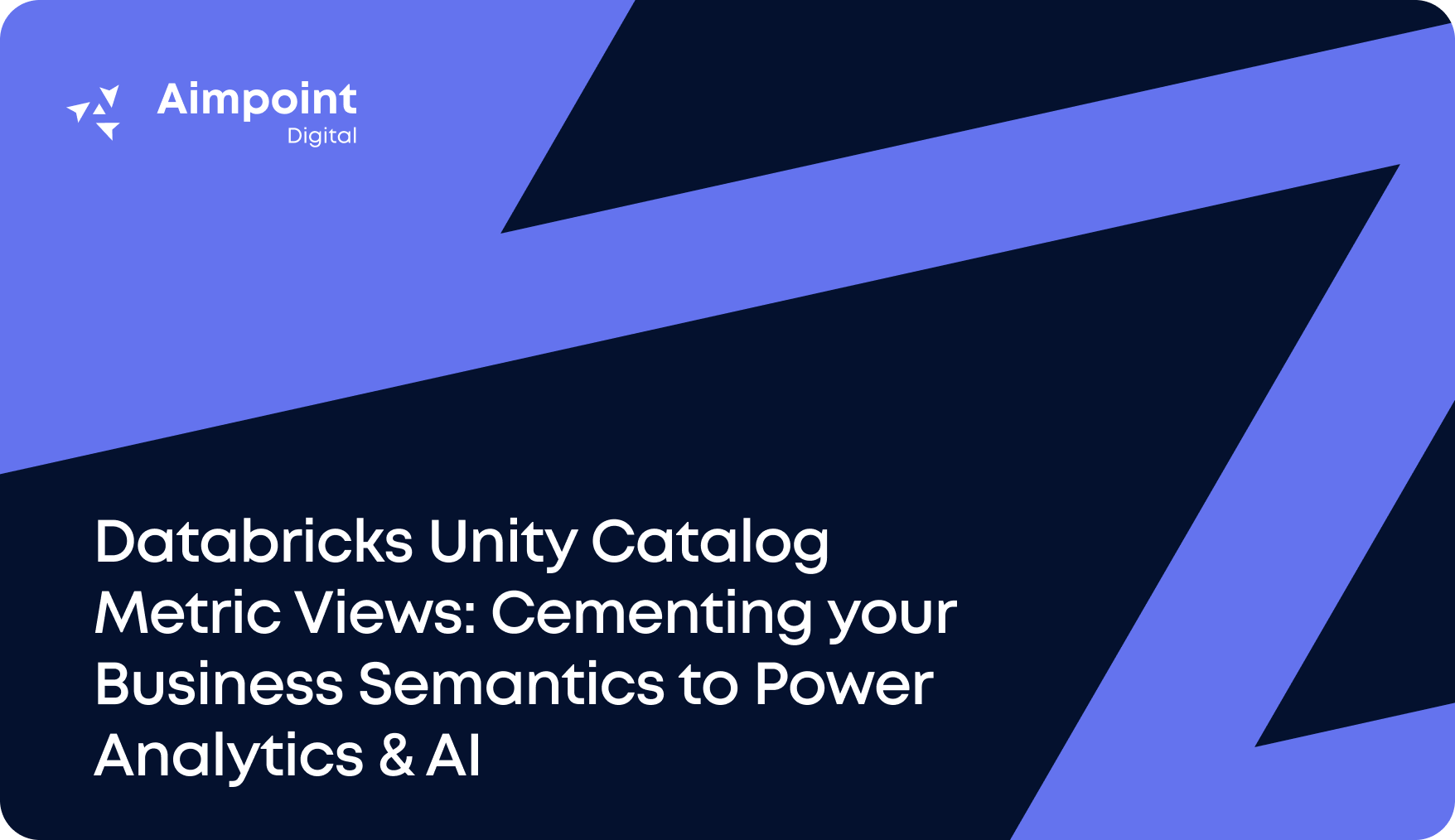The Hidden Business Context Problem
When transforming raw data into actionable insights for analysis, organizations routinely apply sophisticated transformations: joining disparate systems, performing complex aggregations, converting cryptic 2 letter codes into meaningful business language, and more. Data teams invest significant effort crafting these refined datasets, which power executive dashboards, drive inventory forecasts and machine learning use cases, and fuel AI-powered applications.
Yet beneath this polished output lies a critical challenge: the business context embedded in these transformations remains largely opaque. Traditional SQL queries function as sealed containers of institutional knowledge, where intricate business rules, specialized calculations, and domain expertise are woven into code but remain invisible to modern AI systems.
This creates a fundamental disconnect. AI tools like Databricks Genie need explicit business context through instructions to provide meaningful assistance, but the crucial interpretive layer—what the data means to the business—stays locked within SQL logic. This institutional knowledge becomes fragmented across numerous queries, living primarily in the minds of individual developers or scattered throughout documentation that AI cannot easily access.
This challenge isn't new. Over two decades ago, Martin Fowler examined this exact issue, exploring the fundamental question of how much business logic belongs in SQL and the implications of such an architectural choice.
Databricks Metric Views are the Bridge
One of the most exciting announcements at the Data & AI Summit was the release of Unity Catalog metric views. Metric views transform implicit business logic into structured, documented definitions with clear dimensions and measures. They exist as YAML-based metric definitions and provide the semantic layer that AI systems need to understand business intent. This means that metric names, expressions, and business rules sit alongside the data itself.


Databricks as Business Context Repository
The layer between aggregated data and end user analytics has always been a gray area. Semantic layer tools exist, but externally. Even if they integrate with your data platform, it's still another step to navigate to another platform to manage that context, business rules, and semantic understanding.
Databricks can now act as that business context registry and truly be a one-stop shop for all analytics.
Business rules can now be defined once and reused consistently as a single source of truth. This positions Databricks as the bridge between raw data and AI-powered insights - a centralized repository of business context within a framework that extends your existing infrastructure while enabling your AI aspirations. Databricks has been continuously moving right in the analytics chain, with improving AI/BI dashboard features and introducing Databricks Apps and LakeBase tables as prime examples of this evolution.
An Extension of Existing Frameworks
As of time of writing, there’s no way to store instructions for Genie in source control. While that feature is almost certainly being developed, storing those pieces of business context alongside your code in metric views can already be registered in any git platform and has full version control. External transformation tools like dbt can already create metric views. This means your existing teams can continue building your data platform and extending the process to include metric views is a small extension that provides significant future benefits. Source controlling your metric definitions increases collaboration, visibility, and security, and reduces risk.
Simplified AI Interactions
Context is king when it comes to AI. Without accurate context, AI models will provide generic, inaccurate, and irrelevant responses. Databricks Genie requires thoughtful preparation of instructions that provide that context. Fortunately, Genie can utilize UC metrics to provide that context. This will result in higher quality responses with less requirement for a comprehensive set of instructions.
Beyond Genie, metric views have become the cement that holds Agent Bricks together. Utilizing that delicious business context beside data transformations will lead to much more accurate and easily deployable agentic systems. AI Judges will be able to leverage context to evaluate responses.
Before diving into the implementation strategy, it's important to understand how metric views can be integrated into your existing data workflows. This section outlines a phased approach to help teams adopt metric views effectively and sustainably.
Implementation Strategy
Successfully implementing metric views requires a thoughtful, phased approach that balances technical execution with organizational change management. The key is establishing the right foundation—both technically and culturally—before scaling across your entire data ecosystem. The following strategies will help you build sustainable adoption while delivering measurable value from day one.
Start Small and Scale Strategically
Begin your metric views journey by working closely with experts to understand their core analytical needs. Start by identifying the 5-10 most critical business questions these domain experts regularly ask of the data, then work backwards to determine which metrics and KPIs are essential for answering them. This question-first approach ensures you're building metric views that directly address real business problems rather than simply digitizing existing reports. Focus your initial rollout on these high-impact metrics within this single domain, allowing your team to gain experience with the technology while delivering immediate, measurable value to stakeholders.
Build Collaborative Governance from Day One
Establish a formal process that involves business stakeholders throughout the metric definition lifecycle. This includes bringing domain experts into initial scoping sessions, conducting regular review meetings during development, and requiring explicit business sign-off before metrics go live. This collaborative approach ensures your metric views truly reflect business needs rather than just technical capabilities.
Plan for Long-Term Success
Consider establishing a center of excellence or dedicated team responsible for metric views governance, training, and support. This helps maintain consistency across your organization while providing a clear escalation path for both technical and business questions as adoption scales. Involve Data Owners / Stewards and have them be responsible for the approach and priority.
At Aimpoint Digital, we’ve automated conversion of dbt and table logic to metric views. Stay tuned for our practical guide on how this is done or reach out for more info.




.png)
.png)